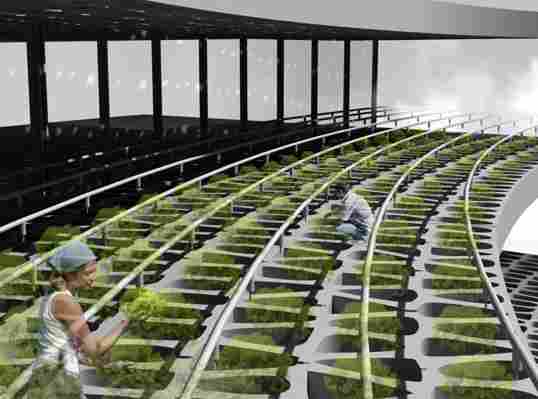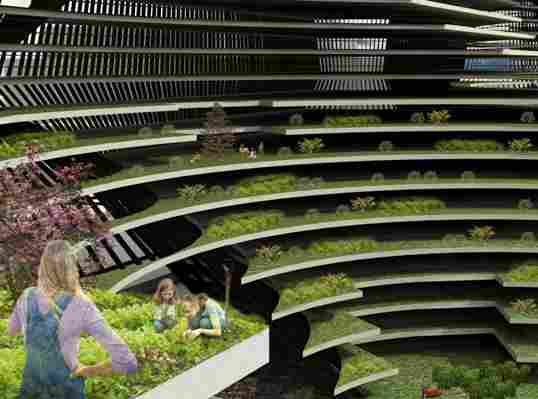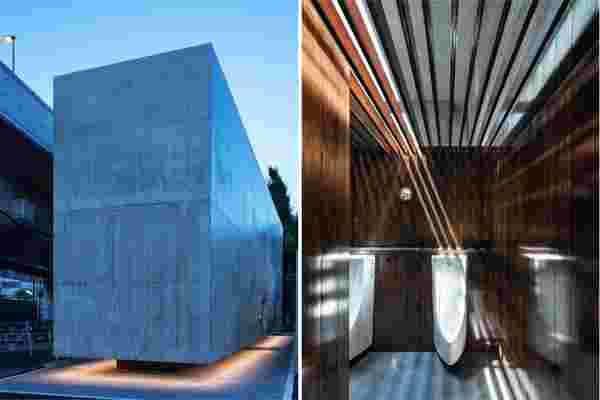
When it comes to public bathrooms in cities , unfortunately, functionality sometimes overshadows a bathroom design’s overall appeal – they never look too inviting. It’s fair to say, we typically set our expectations low – too low – before opting for communal bathrooms in the city’s public parks or transportation buildings. In Tokyo’s Sendagaya Station, however, one architect designed an exception. Suppose Design, a Tokyo-based architecture, and design firm, recently finished work on Sendagaya Station’s public bathroom and while its dark wood interiors and shining steel faucets might make you feel like you’ve accidentally walked into a hotel’s bathroom, you’ve still got a train to catch.
From the outside, Sendagaya Station’s public bathroom is a massive, yet unassuming concrete block that seems to float aboveground, reaching heights of 7.5 meters. Upon closer look, following nature’s call, the monolithic cube of concrete houses an elegant and comfortable space for travelers to use the bathroom and prep for their next train ride or freshen up before starting their stay in Tokyo. Inside, Accoya wood panels line the walls and embrace warm lighting for a relaxed and sensuous overall experience. Accoya wood, generally known for its impressive durability, equips pine wood with a finish that stands the test of time for upwards of 50 years, surpassing the longevity even in that of teakwood.
During the day, sun rays flow through the installment’s exposed roof and produce geometric beams of sunlight that bounce and ricochet off the gleaming brass accents and doorknobs, as well as the deep red wooden doors that will change color over time in accordance with exposure to the sun. Each stall is further equipped with an automatic toilet, baby-changing station, and a large control panel that offers different mechanical features for toilet use such as a front and rear bidet, two pressure options for flushing, as well as a sound barrier for privacy when it comes to nature’s more urgent matters.
Located in a city facility predominantly used for transportation and transition, the public bathroom as designed by Suppose Design for Sendagaya Station provides travelers with a spacious and welcoming respite, much needed after long travel days. If you’re coming from one city for a long trip in Japan, then Suppose Design’s public bathroom will welcome you well. Alternatively, if your trip to Sendagaya Station marks the end of a previous trip, this giant cube of concrete stands ready to welcome you home.
Designer: Suppose Design
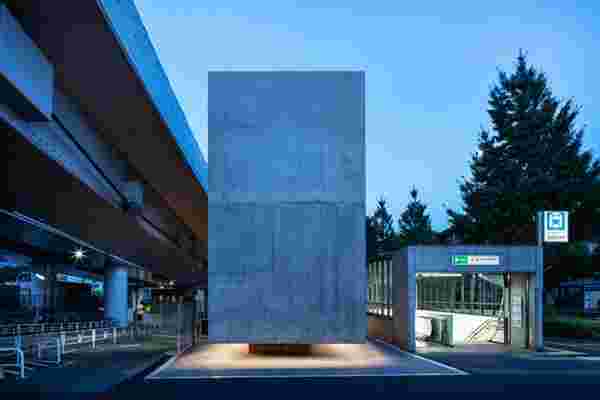
Welcome to 55 Blair Road
A terrace house done in a Heritage Art Deco style, with light open plan living and a nice balance betweeen nature and contemporary living. Fresh. To me, the best part about this house is that it’s a renovation. We’ve got no “before” pics here, but I doubt it compared at all to this magnificent living space. After that it’s gotta be the gigantic light space dividing the two sections of the house, wrapped in aluminum wall cladding absolutely pouring light into the entire abode. Just lovely.
It’s what’s called a “light well” – just fab, right? In this outdoor area is the out door pool and frangipani garden. And maybe you could throw a nice set of seats in there and have a little lemonade?
The TV and music appliances are all hidden. Try and find them. They’re in recesses in the wall revealed by the touch of a button or by the flip of the hand: they’re all behind the giant murals. (NOTE: I am not sure why the murals are of people like Mao Zedong – it seems weird to me.)
The entire second floor is one bedroom / study space and bathroom. The rear section of the house has a kitchen space, powder room (ohh lala!), maid’s room, and roof terrace.
Plus! Mezzanine space created to accommodate a guest bedroom in the attic. Jack roof included. Spiral staircase reaches all the way up there.
NOTE if you’ve got any questions about further details, etc, just ask! I’m sure one of our thousand payed moneys on typewriters would be glad to accommodate you. OR maybe someone from the architecture team could help too. Whichever!
Design Team: Diego Molina, Maria Arango, and Camilo Pelaez
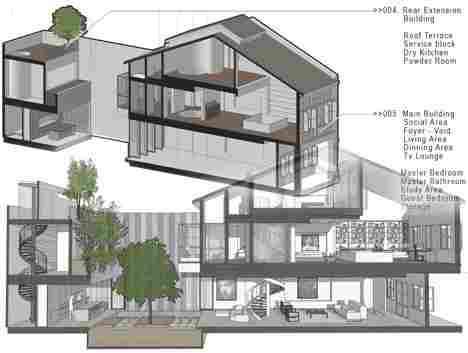
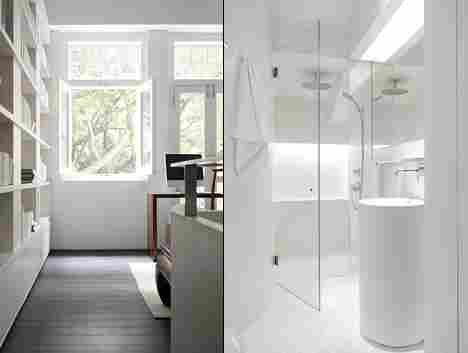
Massive Agricultural Urbanism
One of the biggest challenges in architecture is to create homes that provide more than just shelter. We’re on a slow march of strip mining our resources so the question is, can a home benefit the community and in turn, the environment? Agricultural Urbanism is a proposed residential project that combines thousand year old terrance farming with modern construction.
Each level has its own terrace where a number of crops can be grown privately and communally. Harvests can be shared and sold to supplement incomes. The irregular shape was designed to follow the way the sun moves across the sky to give plants the most amount of sunlight. The substrate not only provides ample grounds for farming, but a natural insulating layer keeping the entire building cool in the summers and warm in the winters. The benefits of vertical farming are two fold. Pests don’t like this kind of structure and runoff is minimized since the entire system is self regulated.
Designer: Greg Chung Whan Park
